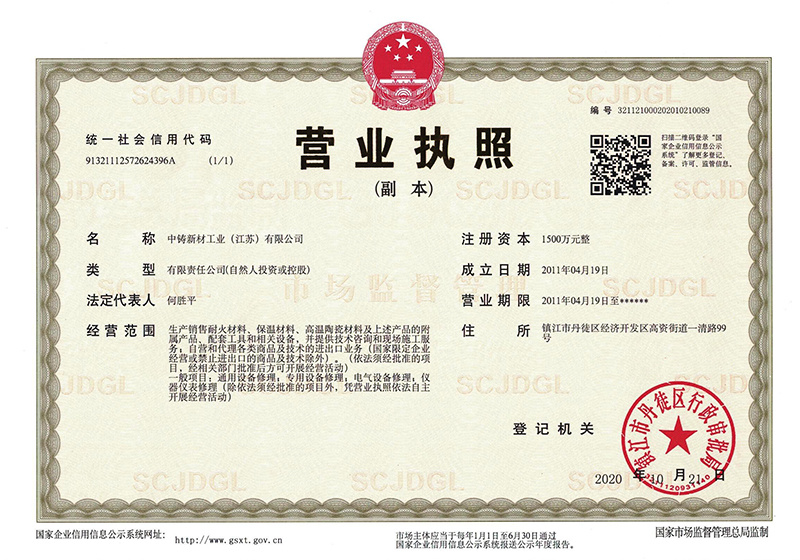News
SINO-FOUNDRY—professional refractory manufacturer
How Foundry Refractory Enhances Fire Resistance in Structures
2025-08-09
How Foundry Refractory Enhances Fire Resistance in Structures Table of Contents Introduction to Foundry Refractory Materials The Importance of Fire Resistance in Modern Construction Types of Refractory Materials Used in Foundries Applications of Refractory Materials in Fire Resistance How Refractory Materials Enhance Fire Resistance Benefits of Using Refractory Materials i
How Foundry Refractory Enhances Fire Resistance in Structures
Table of Contents
- Introduction to Foundry Refractory Materials
- The Importance of Fire Resistance in Modern Construction
- Types of Refractory Materials Used in Foundries
- Applications of Refractory Materials in Fire Resistance
- How Refractory Materials Enhance Fire Resistance
- Benefits of Using Refractory Materials in Structures
- Innovations in Refractory Technology
- Conclusion
- FAQs
Introduction to Foundry Refractory Materials
Foundry refractory materials are specially engineered substances that can withstand extremely high temperatures without melting or deforming. These materials are integral to various industrial processes and play a pivotal role in enhancing fire resistance in modern structures. By providing a robust barrier against fire, foundry refractory materials help to safeguard human lives and protect valuable assets.
In this article, we will explore the diverse characteristics of foundry refractory materials, their applications in fire resistance, and the latest advancements in refractory technology that bolster their effectiveness in construction.
The Importance of Fire Resistance in Modern Construction
Fire resistance has become a critical consideration in building design and construction. As urban areas grow denser and structures become taller and more complex, the potential for catastrophic fire incidents increases. Fires can cause extensive damage, not only to properties but also to human lives. Here are some reasons why enhancing fire resistance is essential:
1. Protecting Lives and Property
The primary goal of fire-resistant materials is to provide a safe environment for occupants. Effective fire resistance can prevent the rapid spread of flames and allow for safe evacuation during emergencies.
2. Compliance with Building Codes
Many regions have stringent building codes that mandate the use of fire-resistant materials in certain structures. Adhering to these regulations ensures both safety and legal compliance.
3. Minimizing Economic Loss
Fires can lead to significant financial losses due to property damage, business interruption, and legal liabilities. Using fire-resistant materials helps mitigate these risks.
4. Enhancing Building Durability
Fire-resistant materials often possess additional properties that enhance the structural integrity and longevity of buildings, making them a wise investment.
Types of Refractory Materials Used in Foundries
Foundry refractory materials come in various forms, each tailored for specific applications. Understanding these types is crucial for selecting the right material for enhancing fire resistance in structures.
1. Brick Refractories
Brick refractories are durable, fireclay-based materials used in high-temperature applications. They are extensively used in furnaces, kilns, and other structures that require effective heat resistance.
2. Castable Refractories
Castable refractories are a mix of granular materials and a bonding agent. They can be molded into various shapes and are ideal for complex designs. Their versatility makes them popular in construction.
3. Monolithic Refractories
Monolithic refractories are castable materials that can be applied as a continuous layer. They provide seamless protection against heat and are easy to install, making them preferable for many construction projects.
4. Insulating Refractories
Insulating refractories are designed to minimize heat transfer. These materials help maintain high temperatures within a furnace while keeping the surrounding structure safe from heat damage.
5. Precast Refractories
Precast refractory shapes are manufactured off-site and then transported to the construction site for installation. They offer precision and consistency, ensuring high-quality fire resistance.
Applications of Refractory Materials in Fire Resistance
Foundry refractories are not just limited to industrial uses; they find applications across various sectors in construction. Here are some key areas where these materials enhance fire resistance:
1. Industrial Facilities
Factories and plants often utilize refractory linings in kilns, boilers, and furnaces to protect structural components from extreme temperatures.
2. Commercial Buildings
High-rise buildings and commercial complexes benefit from refractory materials in fire-resistant walls and cladding, which enhance safety during fire incidents.
3. Residential Developments
In residential buildings, refractory materials are commonly used in fireplaces, chimneys, and surrounding areas to ensure safety.
4. Infrastructure Projects
Bridges, tunnels, and transportation hubs utilize refractory materials to withstand high-temperature conditions and enhance fire safety.
5. Power Generation Facilities
Power plants employ refractory materials to line boilers and other structures, protecting them from the intense heat generated during energy production.
How Refractory Materials Enhance Fire Resistance
The effectiveness of foundry refractory materials as fire-resistant solutions can be attributed to several mechanisms:
1. High Melting Points
Refractory materials are engineered to withstand temperatures that exceed standard building materials. This property ensures they do not melt or degrade when exposed to high heat.
2. Thermal Insulation
Many refractory materials provide excellent thermal insulation, reducing heat transfer to adjacent structures. This insulation capability helps prevent the spread of fire.
3. Structural Integrity
Refractory materials maintain their structural integrity under extreme temperatures, ensuring they continue to provide protection even in the event of a fire.
4. Low Thermal Conductivity
The low thermal conductivity of refractory materials minimizes heat absorption, further enhancing their fire-resistant properties.
5. Durability and Longevity
Refractory materials are designed for long-term performance, which means they can provide reliable fire resistance over the lifespan of a structure.
Benefits of Using Refractory Materials in Structures
Integrating refractory materials into building designs offers numerous advantages that contribute to overall safety and functionality:
1. Increased Safety
The primary benefit of using refractory materials is enhanced safety for occupants, reducing the likelihood of fire-related incidents.
2. Improved Structural Performance
Refractory materials add robustness to structures, allowing them to endure higher stress and wear, ultimately extending their lifespan.
3. Energy Efficiency
By reducing heat loss through insulation, refractory materials contribute to energy efficiency, resulting in lower operational costs.
4. Versatility in Design
Refractory materials can be utilized in various architectural configurations, providing architects and builders the freedom to innovate without compromising safety.
5. Environmental Considerations
Many refractory materials are designed with sustainability in mind, utilizing recycled content and minimizing environmental impact during production.
Innovations in Refractory Technology
As technology evolves, so does the field of refractory materials. Recent innovations have led to advancements that enhance their fire resistance capabilities:
1. Nanotechnology
The introduction of nanomaterials has significantly improved the thermal stability and strength of refractory products, offering better fire resistance.
2. Smart Materials
Smart refractory materials that respond to temperature changes can provide real-time monitoring and adaptive protection against fire.
3. Enhanced Formulations
Modern formulations, combining various raw materials, have led to improved properties such as reduced weight, increased durability, and enhanced resistance to thermal shock.
4. Eco-Friendly Alternatives
Advancements in eco-friendly refractory materials are leading to more sustainable options that maintain performance while reducing environmental impact.
5. Advanced Application Techniques
New methods of applying refractory materials, such as advanced spraying techniques, allow for more uniform coverage and greater effectiveness in fire resistance.
Conclusion
Foundry refractory materials play a vital role in enhancing fire resistance in structures. With a wide variety of applications, these materials not only protect lives and properties but also contribute to improved building performance and energy efficiency. As innovations in refractory technology continue to evolve, the construction industry can expect even greater advancements in fire safety. By incorporating these materials into building designs, we can create safer environments that stand the test of time.
FAQs
1. What are foundry refractory materials?
Foundry refractory materials are specialized products designed to withstand high temperatures without melting or deforming, providing essential fire resistance in various applications.
2. How do refractory materials improve fire safety in buildings?
Refractory materials enhance fire safety by maintaining their structural integrity at high temperatures, minimizing heat transfer, and providing thermal insulation.
3. Are there different types of refractory materials for specific applications?
Yes, there are various types of refractory materials, including brick refractories, castable refractories, and insulating refractories, each suited for specific applications.
4. Can refractory materials be used in residential construction?
Absolutely. Refractory materials are commonly used in residential settings, particularly in fireplaces and chimneys, to enhance fire safety.
5. What innovations are currently shaping the future of refractory technology?
Innovations such as nanotechnology, smart materials, and eco-friendly alternatives are shaping the future of refractory technology, improving performance and sustainability in fire-resistant materials.
Related News
2024-11-05
Zhongzhu New Materials Industry sincerely invites you to participate in the 24th International Forum and Exhibition on Recycled Metals.

WeChat public account

View mobile website
Address : No. 99, Yiqing Road, Gaozi Street, EconomicDevelopment Zone, Dantu District, Zhenjiang City
Fax : +86-511-85683066
E-mail : sales@sfr168.com
Website : https://www.sfr168.com
Copyright©2023 Sino-Foundry Refractory(Jiangsu) Co.,Ltd. Powered by:www.300.cn
Copyright©2023 Sino-Foundry Refractory(Jiangsu) Co.,Ltd.
IPV6 | SEO | Cloud Information



